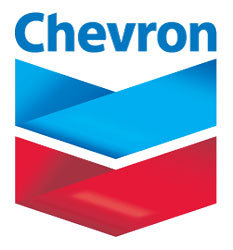Innovative logging technique boosts productivity for Chevron Thailand
 Under rig floor logging (URFL) is a technique pioneered by Chevron Thailand that has improved drilling efficiency by moving logging operations away from the drilling path, allowing wireline and drilling operations to be performed simultaneously.
Under rig floor logging (URFL) is a technique pioneered by Chevron Thailand that has improved drilling efficiency by moving logging operations away from the drilling path, allowing wireline and drilling operations to be performed simultaneously.
This innovative technique to increase drilling productivity was presented at the IADC Well Control Asia Pacific 2009 Conference & Exhibition by Thaveesub Laoamornpanich, drilling engineer for Chevron Thailand.
“There are a number of conditions required for under rig floor logging,” Mr Laoamornpanich said. “The first is batch drilling. In Thailand, Chevron usually typically drills wells in eight- or 12-well batches.” Chevron has used URFL from 10 platforms, as well as three tender assist rigs and two jackup rigs, with both open and cased hole.
Other conditions required include predictable hole stability and a predictable well control environment.
“We also need a mind-set that repeatability and process standardization are possible both on the rig and in the office,” he added.
Benefits of this approach include less rig time to drill a well and less rushing to pick the tubing X-nipple locations in each well after the log is obtained. Also, a wireline tool problem has less impact on the overall operation, and extra wireline logs may be run with no impact on rig time.
Mr Laoamornpanich estimated that from June 2007 to July 2009, Chevron Thailand saved more than 40 rig days by employing URFL on 76 open-hole wells and 31 cased-hole wells.
Once a well is drilled, URFL is accomplished by skidding the rig over to next well location and starting logging operations on the previously drilled well. Key components for open holes include a pressure control and riser system, a hydraulic control system for well control equipment, work platforms to access these valves, and a trip tank.
In normal URFL operations, the wireline unit is placed on a URFL cantilever on the BOP deck beneath the rig floor. Wireline is first run laterally through a diverter sheave and then over an A-frame swivel sheave down into the wellbore.
In the event of well control concerns in open-hole logging, Mr Laoamornpanich said, wireline from the URFL cantilever is rerouted from the URFL cantilever up to the rig floor, tubing is then run downhole.
Chevron uses 22 criteria for making a “Go/No Go” decision on whether to use URFL. Key considerations include barite sag, mud properties, kick tolerance, swab gas, hole condition, well control incidents and weather.
Typical response to a well control event involves immediately shutting down the unaffected operation. If the wireline operation is affected by a well control event, the rig is then skidded back to the previous well.
Though originally designed for Chevron’s fast-paced drilling operations in Thailand, the URFL concept is currently being adapted for use in Chevron’s Nigeria operations.





One Comment